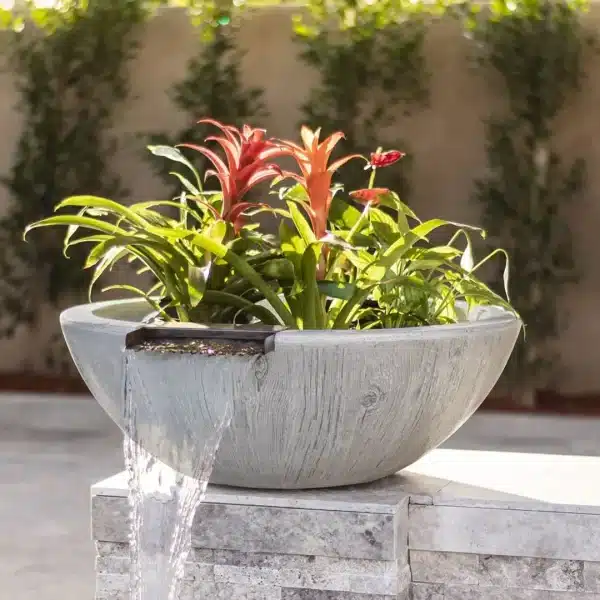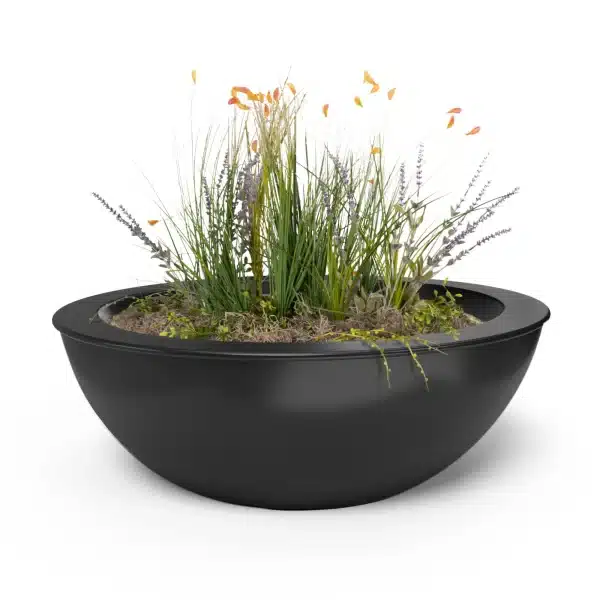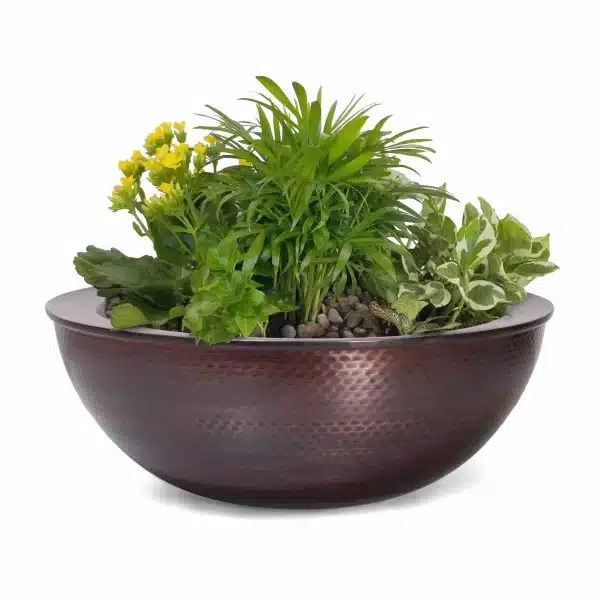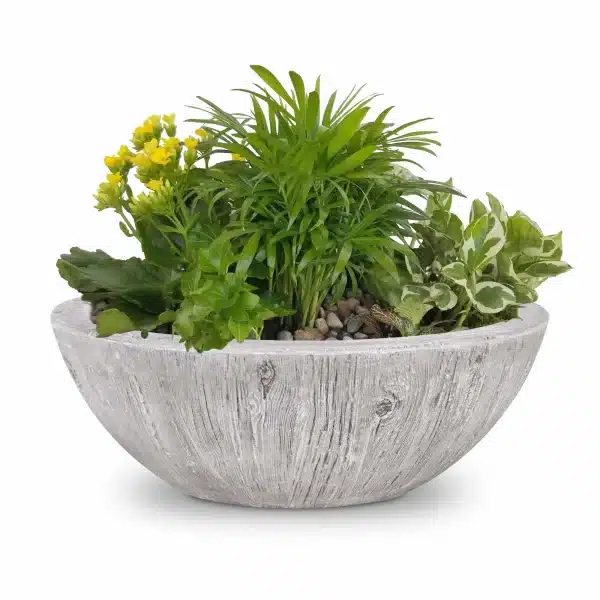Introduction
Fountains have long been a centerpiece of gardens, courtyards, and public spaces. Their soothing sounds and dynamic water movement add elegance, calm, and vitality to any landscape. But what if you could take them a step further? Imagine your fountain surrounded by floating islands of greenery, blooming aquatic plants, and vibrant ecosystems that not only enhance beauty but also promote biodiversity.
Welcome to the world of floating gardens. Once seen mainly in traditional Asian and Mesoamerican cultures, floating gardens are making a comeback in modern landscaping and urban design. By integrating aquatic plants into fountains, you can create stunning living displays that are sustainable, eye-catching, and environmentally beneficial.
This article explores the design principles, plant choices, maintenance strategies, and creative ideas for floating gardens around fountains. Whether you want to elevate a backyard water feature or design an elaborate public installation, this guide will provide the inspiration and technical know-how you need.
The Appeal of Floating Gardens
Floating gardens hold a special charm that combines aesthetic elegance with ecological function. Unlike conventional planters or static arrangements, floating plant displays are dynamic, responding to the fountain’s water flow, light conditions, and seasonal changes.
Key Benefits:
- Visual Impact: Floating gardens soften the hard edges of fountains and create a lush, layered look.
- Biodiversity: They support pollinators, birds, and even fish by providing shade and habitat.
- Water Quality: Many aquatic plants naturally filter and oxygenate water, helping to control algae.
- Cultural Inspiration: Floating gardens echo ancient techniques used in places like Xochimilco, Mexico and Kashmir, India, where aquatic farming has thrived for centuries.
- Modern Sustainability: They reduce reliance on synthetic filtration by using natural processes.
Understanding Fountain Dynamics
Before designing a floating garden, it’s important to consider the specific conditions of your fountain.
Factors to Evaluate:
- Water Depth: Determines which plants will thrive (shallow-rooted vs. deeper floating species).
- Flow Rate: Strong jets may displace delicate plants; calmer zones allow stability.
- Sunlight: Full sun supports flowering plants like lilies, while shade-tolerant species prefer filtered light.
- Size & Shape: A large pond-style fountain allows diverse plantings, while smaller basins need compact designs.
- Water Chemistry: pH, nutrient levels, and chlorine content affect plant survival.
Understanding these variables ensures your floating gardens won’t just look good but will flourish long-term.
Design Principles for Floating Gardens
Floating gardens should balance practicality, beauty, and sustainability. Here are core principles to guide your design:
1. Layering for Depth
Use tall grasses or lotus in the center and trailing or low-growing plants around the edges. This creates a natural look and prevents visual monotony.
2. Balance of Color and Texture
Mix flowering plants (like water hyacinths) with broad-leafed greenery (like taro). Add variegated foliage for visual contrast.
3. Floating Frameworks
Use floating planters made of eco-friendly materials such as coconut coir, bamboo, or recycled plastic rafts. Modular hexagonal units allow flexible design changes.
4. Strategic Placement
Position floating islands where water movement is gentle. Anchor displays with discreet weights if needed, keeping them away from pumps or spouts.
5. Symmetry vs. Organic Flow
For formal fountains, symmetrical arrangements work well. For natural pond-style fountains, irregular floating clusters look more harmonious.
Choosing the Right Plants

Plant selection is the heart of floating garden design. Each plant type offers unique aesthetic and ecological benefits.
Floating Plants
These plants rest on the surface, their roots trailing in the water.
- Water Hyacinth (Eichhornia crassipes): Striking purple blooms, excellent water purifier.
- Duckweed (Lemna minor): Tiny, creates a green carpet effect, great for nutrient absorption.
- Frogbit (Limnobium laevigatum): Rosette-like leaves, low maintenance.
Rooted Aquatic Plants
(grow in planters submerged in floating frameworks)
- Water Lilies (Nymphaea spp.): Classic choice with colorful blooms.
- Lotus (Nelumbo nucifera): Sacred in many cultures, dramatic leaves and flowers.
- Pickerelweed (Pontederia cordata): Spiky purple blooms, pollinator-friendly.
Marginal & Semi-Aquatic Plants
Ideal for floating rafts near fountain edges.
- Canna Lilies: Bold flowers in red, orange, or yellow.
- Papyrus (Cyperus papyrus): Tall, feathery, creates vertical interest.
- Taro (Colocasia esculenta): Large, lush leaves that add tropical flair.
Edible & Functional Plants
Some floating gardens integrate food plants for sustainability.
- Water Spinach (Ipomoea aquatica): Edible and attractive.
- Rice (Oryza sativa): Traditional floating garden crop.
- Herbs: Mint and basil can adapt to semi-aquatic floating planters.
Creative Design Ideas
To spark inspiration, here are some imaginative ways to incorporate floating gardens around fountains:
Zen-Inspired Lotus Pool
Minimalist design with lotus, dwarf water lilies, and smooth stone accents. Ideal for meditative spaces.
Tropical Oasis Fountain
Mix of taro, canna lilies, and papyrus with bright floating blooms. Great for warm climates and resort-style gardens.
Wildlife Habitat Fountain
Use pickerelweed, water hyacinth, and grasses to attract dragonflies, frogs, and birds. Supports biodiversity while looking lush.
Floating Herb Garden
Incorporate herbs like mint and watercress in floating baskets for dual beauty and functionality.
Seasonal Rotations
Plant spring-blooming irises, summer lotus, autumn canna, and winter evergreens for year-round appeal.
Installation Techniques
Floating gardens can be created in DIY-friendly or professional ways.
DIY Methods
- Use PVC pipe frames wrapped with netting to hold soil and plants.
- Recycled styrofoam sheets can serve as buoyant rafts (though less eco-friendly).
- Coconut coir mats provide natural anchoring for roots.
Professional Floating Planters
- Pre-made floating islands with UV-resistant, eco-safe materials.
- Modular designs that interlock for large-scale fountains.
- Options with built-in irrigation systems for balanced moisture.
Anchoring & Stability
- Use tether lines to keep floating gardens in place.
- Add discreet underwater weights to prevent drifting into pumps.
Maintenance & Care
A floating garden requires ongoing attention to stay healthy and beautiful.
Key Maintenance Practices:
- Pruning & Deadheading: Prevents overcrowding and promotes new growth.
- Nutrient Management: Use aquatic-safe fertilizers sparingly.
- Algae Control: Balance plant density to avoid excessive algae blooms.
- Water Testing: Monitor pH and oxygen levels for optimal growth.
- Seasonal Adjustments: Remove tender plants before frost in colder climates.
Common Challenges:
- Overgrowth: Floating plants like hyacinth can spread rapidly—thin them regularly.
- Mosquitoes: Ensure water circulation is sufficient to prevent breeding.
- Fish Compatibility: Choose plants that won’t be entirely eaten by koi or goldfish.
Ecological & Cultural Dimensions
Floating gardens are not just decorative, they hold cultural and ecological depth. In Mexico’s chinampas, floating gardens sustained entire civilizations. In Bangladesh, farmers use floating rafts to grow crops during floods. Modern urban ecology projects use floating wetlands to improve water quality in polluted rivers.
By adding floating gardens to fountains, you participate in a tradition that blends art, nature, and resilience.
Step-by-Step Design Process
- Assess Your Fountain (size, depth, flow, light).
- Choose a Theme (Zen, tropical, edible, wildlife-friendly).
- Select Plants (floating, rooted, marginal).
- Build or Buy Floating Platforms.
- Arrange Plants for Aesthetic Balance (height, color, bloom time).
- Install and Anchor Carefully.
- Maintain Regularly (trimming, cleaning, monitoring).
This structured process ensures your floating garden thrives long after installation.
Conclusion
Floating gardens around fountains are more than just ornamental, they are living, breathing ecosystems. By thoughtfully combining aquatic plants with water features, you can create displays that are visually stunning, environmentally sustainable, and culturally rich.
Whether you design a serene lotus pond, a tropical retreat, or a habitat-rich floating wetland, the possibilities are endless. With careful planning, plant selection, and maintenance, your custom fountain can become the centerpiece of a vibrant floating garden that delights the senses and nurtures the environment.






